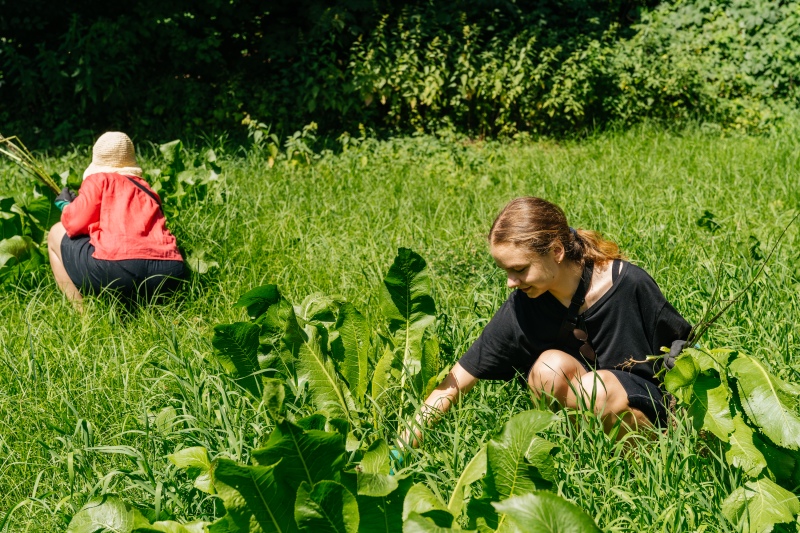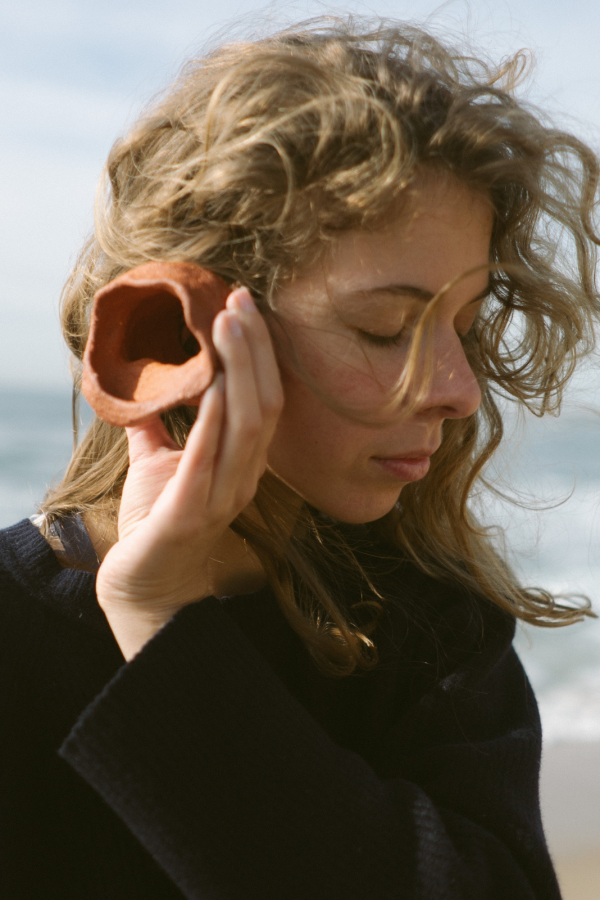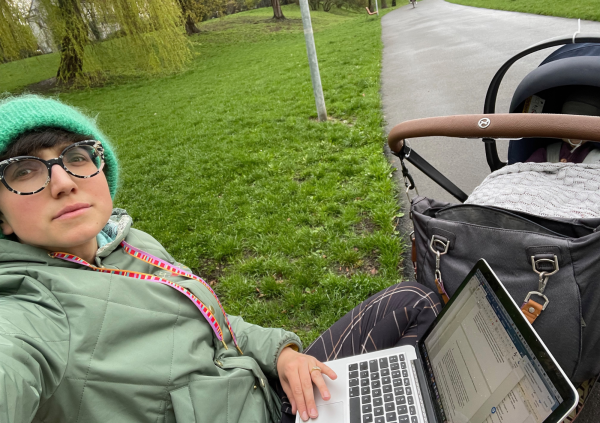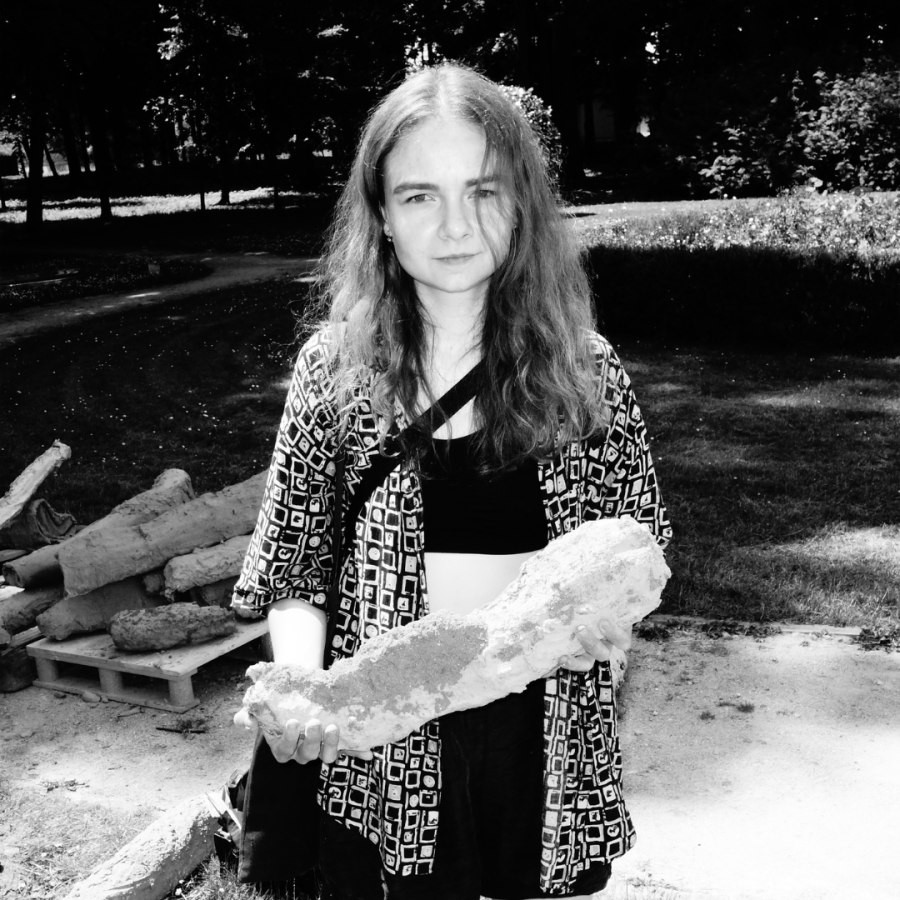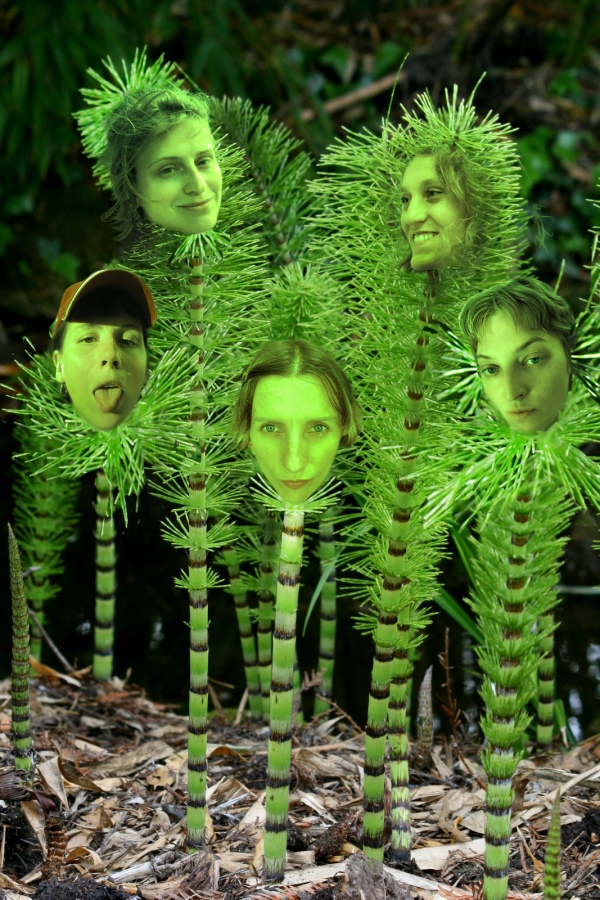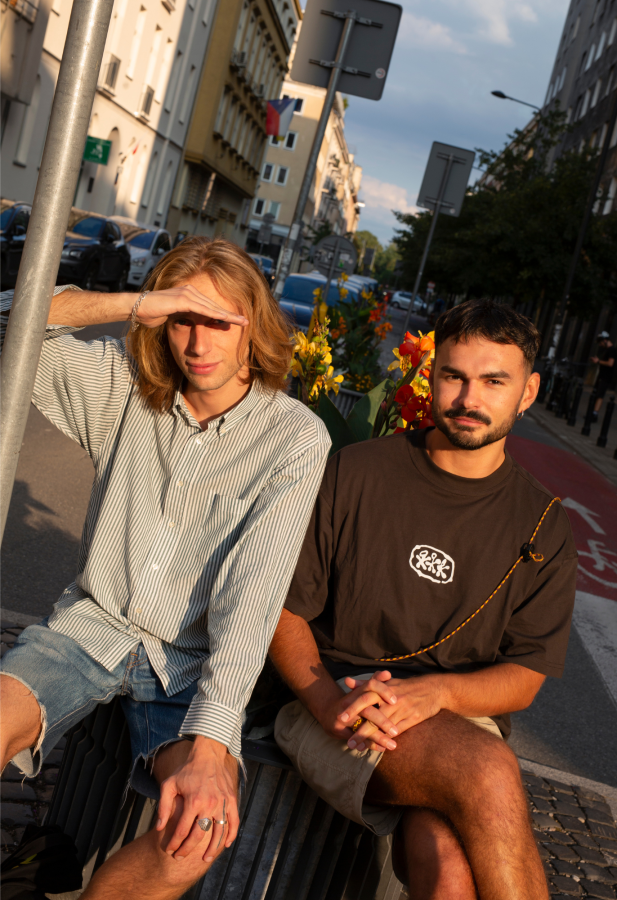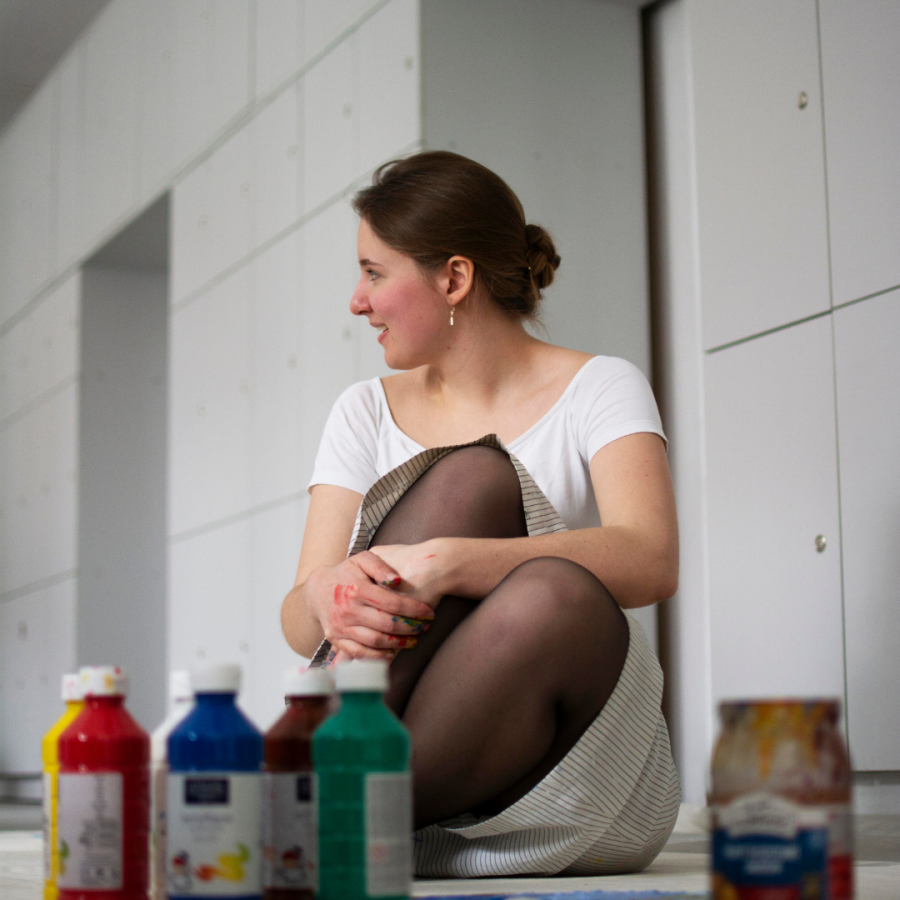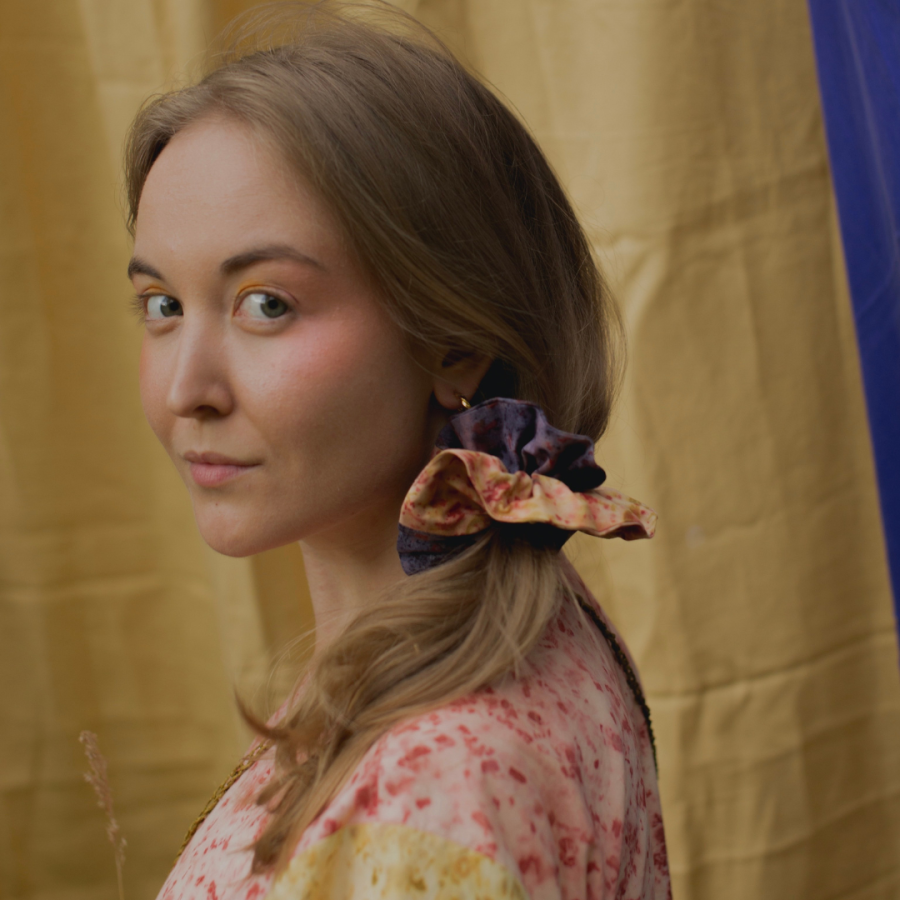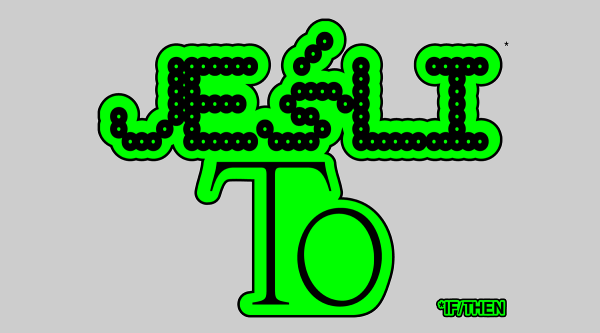The Common Field (2024—)
- Previous
- About
- Programme
- III. period – Local kinship
- Photos
- Open Studio - I. Period
- Rooting – II. period
- Next
In the face of climate catastrophe, it is important to change the perspective to one that takes into account not only human beings, but more importantly their lives in specific ecosystems. As a counter to the Anthropocene, Glenn A. Albrecht has proposed the concept of the Symbiocene – the practice of living with respect for all organisms and the creation and protection of symbiotic relationships, especially at the local level.
Facing this challenge, a long-term artistic and research project, {The Common Field} was created. Its next period – like the previous ones – brought together Polish and foreign artists: the SAM Rozkwit group, Annelotte Lammertse and Anca Bucur. They work at the intersection of visual arts, landscape architecture, ecology, and education, and the green surroundings of U–jazdowski became the starting point as well as the field of their practice.
On the evening of June 17, SAM Rozkwit invited eager participants to plant a scrub, i.e., a group of thorny bushes, and to think about the habitats of wildness – both the natural ones and those that mark the limits of our language. Together we designated a safe space for birds, insects, small mammals, fungi, and many other organisms, which will remain in the Castle Park for many years. It became a prototype for a new way of thinking about the commonplace as something that requires humans to withdraw and accept the presence of other beings with whom we share the world.
The diverse non-human beings and the reflection on interspecies co-responsibility are also part of Annelotte Lammertse's artistic practice and research. She takes into consideration the relationship between plants and insects, which use color as a survival strategy and which together influence the urban landscape. On June 24, the artist and participants, who joined her, created a healing St. John's wort oil and enjoyed an unusual, shared meal consisting of the Polish cochineal. We took a look at how plants, considered weeds, produce valuable protective pigments that could be an important survival tool in an era of advancing climate change.
Part of the processes of global knowledge production is the reflection on culture and its creations. This term in an ancient sense derives from tillage. Whereas the land and its materiality are one of the points of interest of ecofeminist thought, which seeks for new collective models of functioning in a reality governed by the rules of capitalism. On June 26 Anca Bucur delivered a lecture on the essentialist ecofeminist turn in visual art, taking a closer look at a capitalist system of production and the relation between nature and women. The artist set these topics in Polish and Romanian contexts.
The green area around the Castle has once again become a laboratory for thinking about human and non-human communities. The common field is an arrangement of dependencies that provides an opportunity to explore new practices of shared responsibility and mutual caring and to escape the capitalist framework of modernity. Meetings with our resident artists were a chance to learn how to be attentive, to listen, and to look beyond the boundaries of one's own experience toward communal local kinship.
